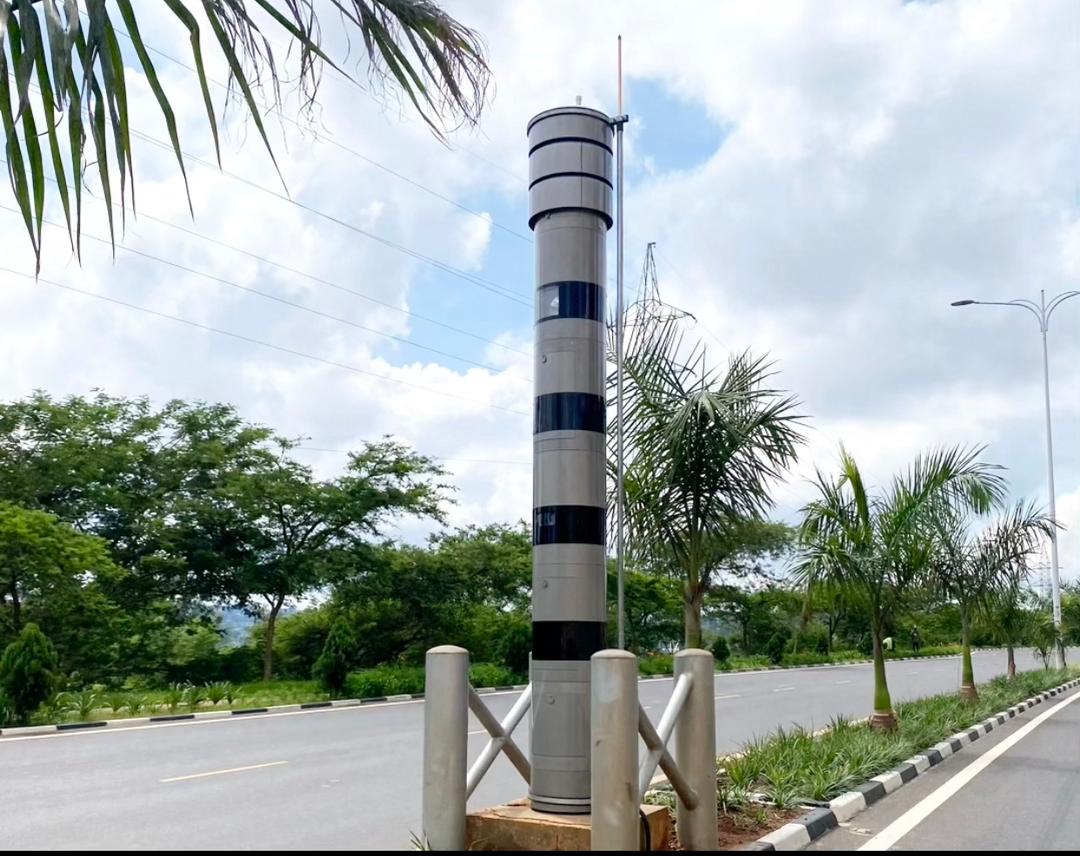
A fixed speed enforcement camera popularly known as Sophia in Kigali
From the Horse carriage of 1880s with an average speed of 30km/hour to the Koenigsegg Agera RS with 447 km/h today or the 211 km/h of the V8 engine which is famous on Rwandan market, the speed in the new generation cars has improved beyond human understanding.
However, the traffic of motorized vehicles is going from heavy to heavier, with road users who also include pedestrians and riders of non-motorised vehicles asking for more safety.
In Rwanda, a combination of measures is taking shape to address safety issues among the road users.
Traffic cameras are leading the way to an extent that they might replace or hugely review downward the number of traffic personnel on the road.
The spokesperson of Rwanda traffic police department Senior Superintendent(SSP) René Irere in an exclusive interview spoke about the types of traffic cameras currently in use.
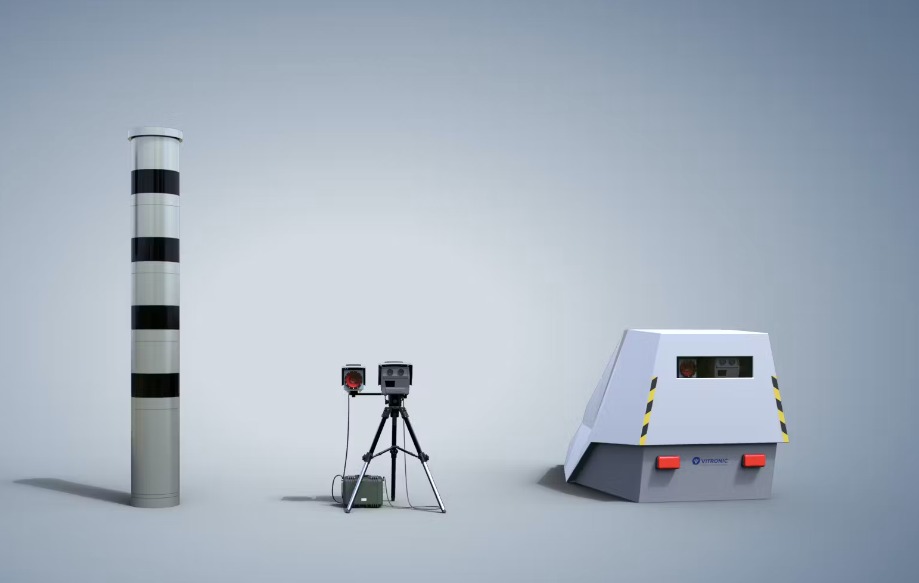
The speed enforcement cameras. The tall camera(L) popularly known as Sophia is common in Kigali and across the country. Between two cameras of this shape, the mobile camera(Middle)
The list include speed enforcement cameras, which include a fixed camera that happened to be popularly known under the name Sophia. It was named after an intelligent and popular Robot-Sophia which attended Transform Africa in May 2019 in Kigali.
This camera which stands tall across all road networks in Kigali, including neighbourhood streets and in countryside highways has tremendously defied the drivers’ guts to drive like crazy.
‘Sophia’ has become an effective speed governor, according to one driver in Nyabugogo, Kigali city. One does not drive the way they want. Once the camera shoots the address of one’s car for over speeding, a short message is directly sent to their mobile phone, including fines and when they are due.
The car owner will have to pay by due date or else, incur an extra Rwf 10,000 penalties and all is paid online via Irembo platform.
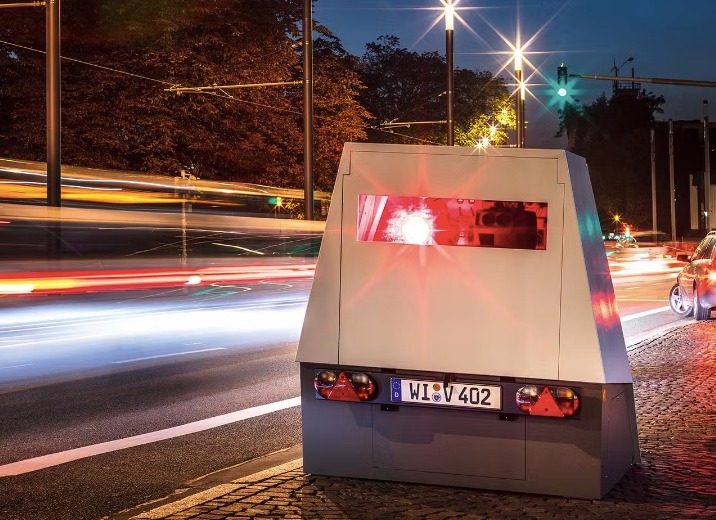
Trailer camera-internet photo
Also in different shape but with the same function is the Trailer which is more like a small cab.
While the capacity of the two cameras may differ, the strategic placement of them alternatively, is intended to bring down reckless driving.
In the same spirit, drivers are warned that probably between two ‘Sophias’ could be a mobile camera, which means that one needs to keep the engine below the maximum of required speed or else, pay fines. However, it might not be a rule to have this type in between.
The main speed limit required on Rwandan roads is 60km/h, but in some areas, the maximum was set to 80km/h. A sign post indicating the speed limit is always placed at nearly 100 meters before the camera.
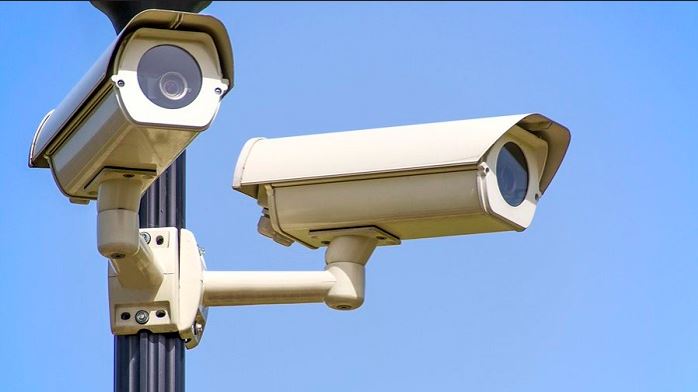
Also supporting the three cameras are the Red Light Cameras which are placed within the traffic lights network. Focusing on the signage on the road’s junctions, the cameras punish mistakes related to zebra crossing violation, lanes violation among others.
Who is who in the project
The new technology which intends to inforce safety on the road was reinforced since 2020 through an agreement with Eastern Ventures, a company from United Arab Emirates(UAE) to procure and install 500 traffic cameras.
The supplies included mobile cameras, fixed cameras, and movable cameras for the speed and other functions.
Speed cameras constituted the lion share with 400 units, which intended to reduce road accidents by 80 per cent.
According to traffic police figures, between January 2020 and November 2022, a total of 21,459 road accidents were recorded. About 4,000 were recorded in 2020 and another 8,000 in 2021, while 8500 were recorded in 2022.
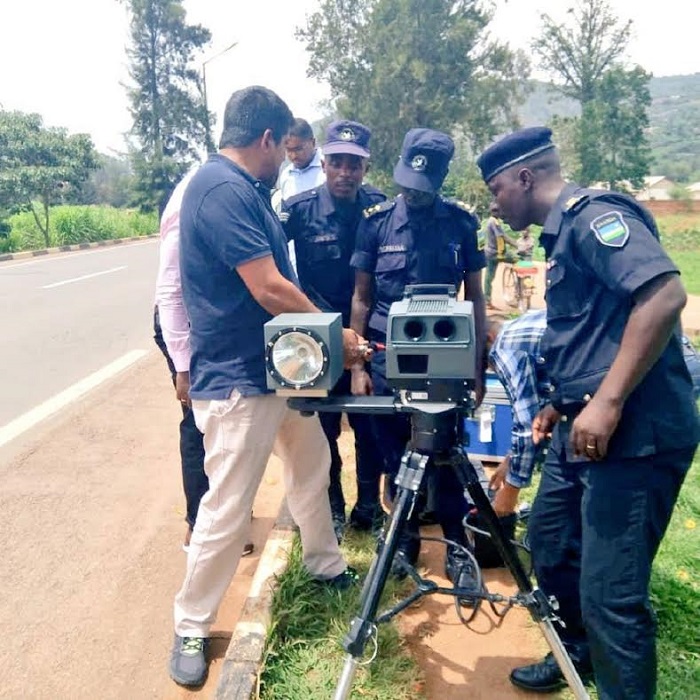
Configuration of a speed enforcement camera
At least 53 percent of road accidents registered between January and June this year across the country, involved motorcyclists and cyclists. Some 98 people died and other 46 sustained serious injuries during the same period.
Most accidents resulted from speeding, dangerous maneuvers, holding onto moving trucks on hilly roads, overloading, cyclists operating at night, riding when intoxicated, violating traffic lights and other traffic rules.
“Believe me, the number of fatalities has declined on our roads, courtesy of the new technology among other contributors. You may recall how in the past a bus with 30 passengers would be involved in an accident killing 2/3 of the passengers and the rest sustaining serious injuries,” said SSP Irere.
“Decline of fatalities on our roads is one of the outcomes of the camera technology, but it contributes among other factors. We shall keep increasing the number of the cameras.”
The cameras, said Irere, will offer many more services beyond speed control and road signs respect. New features would include the use of seat-belt, driving while on phone, among others.

